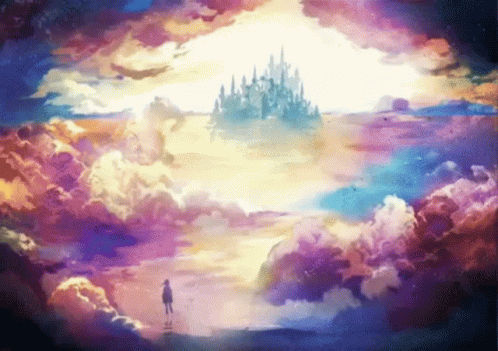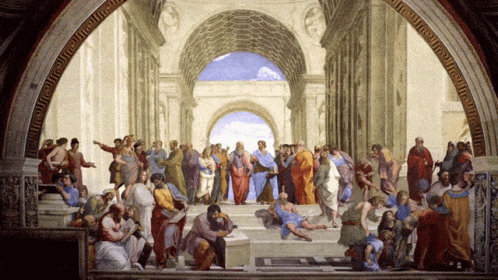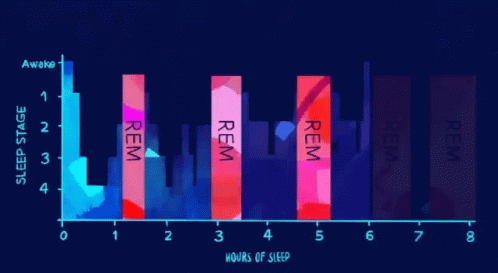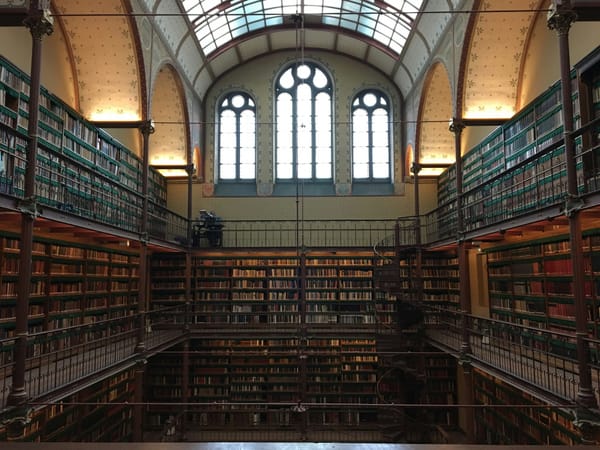the world of dreams

Dreams are one of life's most mysterious dimensions. Each night, the mind seems to take us out of the jurisdiction of space and time as we understand it. Hours of experiences can be masked as minutes, and vice versa. Our thoughts and ideas animate themselves, and we often leave the world of dreams with more questions than answers.
Why do we dream? What could our dreams mean? And when we are dreaming, where is our consciousness?
Ideas about what happens when we fall asleep and how to understand the nature of dreams have been prevalent across the globe for as far back as recorded history goes. Believing they could envelope messages sent from divine spirits or foretell the future, the ancient world ascribed a lot of value and importance to dreaming.

As we advance technologically, we have access to more tools and methods to investigate the mind, by neuroscience, or psychology. Thus, dreams today are widely seen as less mystical, and more so in terms of the inner mechanisms of the physical brain.
Drawing from a range of sources, from across history, culture and scientific discipline, this piece explores the different ways dreams have been understood by humanity over time.
Dreams Across the Ancient World
Dreams were believed by many of our ancestors as a sort of otherworldly medium; connecting us to dimensions of life outside of our waking perceptions. These ideas have transgressed the test of time, and many still see dreams in this sacred light.

Ancient Egypt
The Egyptian Book of Dreams is widely credited as being the first body of knowledge written about dreaming, around 3000 years ago. Within Ancient Egyptian culture, dreams were accepted as mystic experiences which were capable of forewarning of incoming events and containing messages from divine entities.
For these reasons, people would pay close attention to their dreams, and use the symbols within them to decipher potential meanings or divine future events. The use of our dreams as prophecies is known as oneiromancy, practised and believed in across cultures of the past and today.
In Egypt, it was thought that dreaming of gathering dates was a good omen, signalling that the gods would soon bring the dreamer food. Conversely, it was considered a bad omen to dream of drinking beer, as it foretold of impending suffering. Seeing a snake symbolised the settling of an argument happening soon.
The Blue Lotus

The blue lotus flower grows in Egypt and across parts of Asia, and has been used in traditional healing practices there since ancient times.
Depictions of the flower can be seen engraved into the walls of Egyptian tombs, suggesting a deep reverence for the flower and its uses.
It's effects are psychoactive and entheogenic, which means they induce inspiration on a spiritual or religious level. For these reasons, it was used often in sacred contexts. Ancient Egyptians used the blue lotus as a medicine to relieve insomnia, satiate anxiety and trigger more vivid, or even lucid, dreams.

Aboriginal Australia
In Aboriginal Australian culture, the oldest continuing culture on Earth, the 'Dreaming' is the spirit world, which both pre-exists and exists simultaneously to our own - in Dreamtime.
A realm outside of time, a realm home to the ancestor spirits of humanity and all living beings. These spirits dreamed of our entire reality, and so it came into being. They gave us this gift of reality, the ability to perceive it, and also the ability to dream for ourselves. This creation myth breathes new meaning into the phrase 'dreams come true'.
Certain aspects of this metaphysic are thought to be lost in translation, therefore much of the western world's understanding of the concept may be somewhat skewed. These ancient people didn't write their languages, and creation myths may well vary across the tribes of the Australian continent.

Indigenous America
Many indigenous tribes throughout the Americas maintain a spiritual connection to the dream world.
Sharing dreams is seen as a way to share advice and guidance between members in the community, and strong dreamers would be consulted after troubling dreams in order to prevent their events unfolding in waking life. In other words, dreams were thought to have such an impact on waking life that these consultations would prevent the prophecy fulfilling itself. Some say that a failure to listen to and act upon the soul's messages in dreams could even result in one's true soul abandoning them completely.
Due to the vastness of the Americas, the number of individual tribes, and the unanimous importance they ascribe to dreams, much can be taught about the dream world by these peoples.
The Sonenekuiñaji Tribe
Native to the Peruvian Amazon, the Sonenekuiñaji are known to incorporate dreams into everyday life in a multitude of mystical means. They practise eshewa, which they describe as a sort of blurring between the waking and dreaming states.

This process is said to give natural and animal spirits all a sense of personhood and intrinsic value; which increases compassion or all living beings and aids the community in their goal of connection with the land.
Dreamcatchers
The Ojibwe tribe of Northern America and Canada are the makers of the dreamcatcher, which is now used across the globe to protect dreamers. It is believed that the woven web within the dreamcatcher's traditionally wooden ring traps negative spirits and entities trying to enter one's dreams, only allowing good energies in.

Beads, feathers and other talismans decorate the dreamcatcher, and protect the dreamer, and when the rising sun's rays hit the object, the evil spirits trapped within its web are banished. The dreamcatcher was originally used to protect children, but adults soon sought similar protection from these spirits, and now it is used by people of all ages around the world.

Ancient Greece
Dreams were ascribed great meaning in Ancient European societies also, and Greece is an example of this.
Plato, one of ancient Greece's most prolific philosophers, believed that human dreams were a medium used by the gods to convey important messages to mankind.

He taught that one's internal mechanisms can also give rise to dreams though, and so they should be analysed properly before being understood as divine messages (which was probably part of the process in most other cultural practises, such as dream sharing in Native American tribes).
Dreams Within Abrahamic Scripture
The Bible and the Quran, scriptures of the mainstream religions of today, both reference dreams as potential portals of communication between God and man.
Many passages of both the Old and New Testament mention God speaking with his followers through dreams, giving them advice or warning them of future events. Notable examples exist in the books of Genesis, Deuteronomy, Matthew and Jeremiah.

In Islam, three types of dreams are understood. There are good dreams, for which Allah is responsible for sending to the dreamer. For these dreams, Allah should be thanked and praised, and they should be shared with others. Next, there are bad dreams and nightmares, which are sent from the devil and are a form of evil. These dreams should be disregarded, and the dreamer shouldn't dwell on them or share them with others. Third are the dreams that are merely a projection of the subconscious mind; which don't require any further interpretation as they are just recycled thoughts.
Carl Jung
It is impossible to speak about dreams today without mentioning psychologist Carl Jung. In terms of Western approaches, his work is noted as being some of the most influential in modern dream analysis and our understanding of their nature. Jung took off where his predecessor, Sigmund Freud, left off - both of whom drew from a variety of sources in their thinking, from mythology and art to mind-body philosophies and the neuroscience of their day.
Two broad types are mentioned in Jung's categorization of dreams. He thought some dreams to hold significant insight when analysed, and that the symbols and situation within these dreams can inform us deeply about our subconscious mind and its processes - these can be understood as 'big' dreams. By contrast, 'little' dreams, or those linking more to everyday life and situations, served only to keep psychic balance according to Jung, and needn't be dwelled on too much.
Jung also described a sort of innate checks-and-balances system in the psyche, in which our self image is regulated. For example, those of us embodying grandiosity in our waking lives will receive retributions in our dreams - visuals which remind us of our shadow, the darker parts of ourselves we choose to ignore. Thereby, these dreams can tell us a lot about our deeper selves when reflected upon. He also observed, and experienced himself, the somewhat prophetic dream, speculating that it was due to our minds predicting possible outcomes based off of subliminal signals in our waking lives.
In his therapeutic work, he saw his patients' dreams as a means to understand them better. Using his findings, he identified archetypes, or common symbols that arise in most people's dream worlds, such as the Hero and the Lover. These archetypes are so widespread that they move beyond the individual and are found in the collective unconscious, or the realm of concepts found around the world and within individual cultures and societies. This makes them a useful frame of reference in analysing our own dreams.
Modern Science's Explanation
With the gifts of modernity, we now understand that our dreams are most vivid during Rapid Eye Movement (REM) sleep, but may also arise in the deeper stage of Slow Wave Sleep (SWS).

Recent discoveries in neuroscience and neurology lean toward the conclusion that dreams are simply the human's way of consolidating sensory information, transferring memories across the conscious and subconscious brain and recoding neural pathways accordingly.
Because these processes are guided by one's current emotional states , analysis of a dream's symbols and circumstances may shed light on their subconscious motivating forces and give insight into the inner world. In this way, science and the cultures of the ancient world agree that there is great use in analysing what we see in the dream world.
However, science can neither confirm nor deny the idea that dreams can contain messages from the divine, or that people can be visited by their ancestors or deceased family members in dreams.
The possibility remains that these are mere projections of the mind, but regardless, many communities and individuals find solace in the notion of dreams being the bridge between worlds in this way.
So, it seems that some dreams are simply our brains processing information, remixing thoughts and memories and forming visuals as biproducts - which cultures of the past probably realised, as not every single dream experienced was said to contain profound meaning or prophecy.
The progression of the sciences has helped us to better understand dreams as a window into the subconscious mind in this way, and this view is now held widely as not only fact, but the entire truth.
Yet and still, there undoubtedly remains a certain mystic quality to them, a feeling humans have always been infatuated by, which persists through faith and time period. People foretell family members passing away in dreams, others receive impactful advice from those already passed - some claim to communicate with prophets, angels or God. There is a more spiritual side to dreams that science can't fully account for. Perhaps, as humans, we can never fully comprehend this side of them.
But, with the compass of discernment and an awareness of current circumstance, we can try to navigate the etheric world of dreams, using the facts given to us by science, fused with wisdom provided by cultures across the ancient world, to help us interpret those that may be telling us something deeper about ourselves.

SOURCES/FURTHER READING:
https://www.biblestudytools.com/topical-verses/bible-verses-about-dreams/
https://www.healthline.com/nutrition/blue-lotus-flower#what-it-is
https://www.psychologytoday.com/gb/blog/dreaming-in-the-digital-age/202003/jung-s-theory-dreams-reappraisal-0
https://www.jewishencyclopedia.com/articles/5311-dreams
https://www.ucl.ac.uk/~ucgajpd/medicina%20antiqua/sa_dreams.html#:~:text=Along%20with%20many%20people%20before,Dreams%20demand%20interpretation.
https://www.forbes.com/sites/quora/2016/10/04/why-do-we-dream-recent-developments-in-neuroscience-may-have-the-answer/?sh=7eb7090e5451
https://www.thesap.org.uk/articles-on-jungian-psychology-2/carl-gustav-jung/dreams/ - jungian view
living with dreams, roderick peters
the hidden lives of dreams, melinda powell
dreams, rosie march-smith
https://www.ncbi.nlm.nih.gov/pmc/articles/PMC2737577/ - lucid dreams
https://www.medicalnewstoday.com/articles/323077#definition - lucid dreaming
Science & Spirituality episode 119
https://readthespirit.com/explore/the-importance-of-dreams-in-american-indian-tradition/ !!!!!!!
https://carljungdepthpsychologysite.blog/2020/06/08/dreams-and-prophecy/#.ZGKERHbMK3A
https://www.psychologytoday.com/gb/blog/dreaming-in-the-digital-age/202003/jung-s-theory-dreams-reappraisal-0#:~:text=According%20to%20Jung%2C%20dreams%20give,back%20down%20into%20our%20depths.
https://www.quranexplorer.com/blog/education-in-the-light-of-sunnah-and-qura'an/what-are-dreams-in-the-light-of-islam-part-2
https://quranforkids.com/dreams-in-islam/





